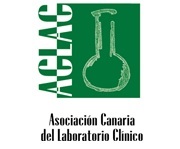OMS. VIH/SIDA. https://www.who.int/es/news-room/fact-sheets/detail/hiv-aids. [Consultado 23 de marzo de 2020]
Tebit DM, Arts EJ. Tracking a century of global expansion and evolution of HIV to drive understanding and to combat disease. Lancet Infect Dis 2011;11:45-56 (Elsevier Ltd.).
DOI: 10.1016/S1473-3099(10)70186-9
Désiré N, Cerutti L, Le Hingrant Quentin et al. Characterization update of HIV-1 M subtypes diversity and proposal for subtypes A and D sub-subtypes reclassification. Retrovirology 2018;15:80.
DOI: 10.1186/s12977-018-0461-y
Compton AA, Malik HS, Emerman M. Host gene evolution traces the evolutionary history of ancient primate lentiviruses. Philos Trans R Soc Lond B Biol Sci 2013;368:20120496.
DOI: 10.1098/rstb.2012.0496
Vallari A, Holzmayer V, Harris B, et al. Confirmation of putative HIV-1 group P in Cameroon. J Virol 2010;85:1403-7.
DOI: 10.1128/JVI.02005-10
Vidal N, Peeters M, Mulanga-Kabeya C, et al. Unprecedented degree of human immunodeficiency virus type 1 (HIV-1) group M genetic diversity in the Democratic Republic of Congo suggests that the HIV-1 pandemic originated in Central Africa. J Virol 2000;74:10498-507.
DOI: 10.1128/JVI.74.22.10498-10507.2000
Berry N, Davis C, Jenkins A, et al. Phylogeny and the origin of HIV-1. Nature 2001;410:1047-48.
DOI: 10.1038/35074179
Abongwa LE, Nyamache AK, Torimiro JN, et al. Human immunodeficiency virus type 1 (HIV-1) subtypes in the northwest region, Cameroon. Virology Journal 2019;16:103.
DOI: 10.1186/s12985-019-1209-6
Lihana RW, Ssemwanga , Abimiku A, et al. Update on HIV-1 diversity in Africa: a decade in review. AIDS Rev 2012;14:83-100.
Taylor BS, Hammer SM, Mccutchan FE. The challenge of HIV-1 subtype diversity. N Engl J Med 2008;359:1965-66.
DOI: 10.1056/NEJMc086373
Casseb J, Komninakis S, Abdalla L, et al. HIV disease progression: is the Brazilian variant subtype B’ (GWFR motif) less pathogenic tan US/European subtype B (GPGR)? Int J Infect Dis 2002;6:164-9.
DOI: 10.1016/S1201-9712(02)90105-0
Kaleebu P, French N, Mahe C, et al. Effect of human immunodeficiency virus (HIV) type 1 envelope subtypes A and D on disease progression in a large cohort of HIV-1-positive persons in Uganda. J Infect Dis 2002;185:1244-50.
DOI: 10.1086/340130
Baeten JM, Chohan B, Lavreys L, et al. HIV-1 subtype D infection is associated with faster disease progression than subtype A in spite of similar plasma HIV-1 loads. J Infect Dis 2007;195:1177-80.
DOI: 10.1086/512682
Camacho RJ, Vandamme A-M. Antiretroviral resistance in diferente HIV-1 subtypes: impact on therapy outcomes and resistance testing interpretation. Curr Opin HIV AIDS 2007;2:123-9.
DOI: 10.1097/COH.0b013e328029824a
Abecasis AB, Wensing AMJ, Paraskevis D, et al. HIV-1 subtype distribution and its demographic determinants in newly diagnosed patients in Europe suggest highly compartmentalized epidemics. Retrovirology 2013;10:7.
DOI: 10.1186/1742-4690-10-7
Santos AFA, Lengruber RB, Soares EA, et al. Conservation patterns of HIV-1 RT connection and RNase H domains: identification of new mutations in NRTI-treated patients. PLoS One 2008;3:e1781.
DOI: 10.1371/journal.pone.0001781
Pinto ME, Schrago CG, Miranda AB, et al. A molecular stydy on the evolution of a subtype B variant frequently found in Brazil. Genet Mol Res 2008;7:1031-44.
DOI: 10.4238/vol7-4gmr383
Ou CY, Takebe Y, Weniger BG, et al. Independent introduction of two major HIV-1 genotypes into distinct high-risk populations in Thailand. Lancet 1993;341:1171-4.
DOI: 10.1016/0140-6736(93)91001-3
Cleghorn FR, Jack N, Carr JK. A distinctive clade B HIV type 1 is heterosexually transmitted in Trinidad and Tobago. Proc Natl Acad Sci USA 2000;97:10532-7.
DOI: 10.1073/pnas.97.19.10532
Kim EY, Cho YS, Maeng SH, et al. Characterization of V3 loop sequences from HIV type 1 subtype B in South Korea: predominance of the GPGS motif. AIDS Res Hum Retrovir 1999;15:681-6.
DOI: 10.1089/088922299310999
Rodgers MA, Vallari AS, Harris B, et al. Identification of rare HIV-1 Group N, HBV AE, and HTLV-3 strains in rural South Cameroon. Virolgy 2017;504:141-51.
DOI: 10.1016/j.virol.2017.01.008
Von Wyl V, Kouyos RD, Yerly S, et al. The role of migration and domestic transmission in the spread of HIV-1 non-B subtypes in Switzerland. J Infect Dis 2011;204:1095-1103.
DOI: 10.1093/infdis/jir491
Anne-Geneviève M, Santoro M, Charpentier C, et al. Epidemiological study of Doravirine associated resistance mutations in HIV-1 infected treatment-naïve patients from two large databases in France and Italy. 15th EU Meeting on HIV & Hepatitis 2017.
Li Y, Han Y, Xie J, et al. CRF01_AE subtype is associated with X4 tropism and fast HIV progression in Chinese patients infected through sexual transmission. AIDS Lond Engl 2014;28:521-30.
DOI: 10.1097/QAD.0000000000000125
Liebert MA, Casado C, Urtasun I, et al. Different distribution of HIV type 1 genetic variants in European patients with distinct risk practices. AIDS Res Hum Retrovir 2000;16:299-304.
DOI: 10.1089/088922200309403
European Centre for Disease Prevention and Control/WHO Regional Office for Europe. HIV/AIDS surveillance in Europe 2019 – 2018 data. Stockholm: ECDC; 2019.
Delgado E, Benito S, Montero V, et al. Diverse larga HIV-1 non-subtype B clusters are spreading among men who have sex with men in Spain. Front Microbiol 2019;10:655.
DOI: 10.3389/fmicb.2019.00655
Perelson AD, Neumann AU, Markowitz M, et al. HIV-1 dynamics in vivo: virion clearance rate, infected cell life-span, and viral generation time. Science 1996;271:1582-6.
DOI: 10.1126/science.271.5255.1582
GESIDA. Documento de consenso de GeSIDA/Plan Nacional sobre el SIDA respecto al tratamiento antirretroviral en adultos infectados por el VIH. Actualización enero 2019.
Jiang X, Feyertag F, Meehan CJ, et al. Characterizing the diverse mutational pathways associated with R5-Tropic Maraviroc resistance: HIV-1 that uses the drug-bound CCR5 Coreceptor. J Virol 2015;89:11457-72.
DOI: 10.1128/JVI.01384-15
infoSIDA. Departamento de Salud y Servicios Humanos EEUU. https://infosida.nih.gov/drugs/511/ibalizumab-uiyk/0/patient
García F, Álvarez M, Bernal C, et al. Diagnóstico de laboratorio de la infección por el VIH, del tropismo viral y de las resistencias a los antirretrovirales. Enferm Infecc Microbiol Clin 2011;29(4):297-307.
DOI: 10.1016/j.eimc.2010.12.006
Aguilera A, Álvarez M, García F, et al. Diagnóstico microbiológico de la infección por el VIH. 6a. Procedimientos en Microbiología Clínica. SEIMC 2014.
Briggs DR, Tuttle DL, Sleasman JW, et al. Envelope V3 amino acid sequence predicts HIV-1 phenotype (co-receptor usage and tropism for macrophages). AIDS Lond Engl 2000;14:2937-39.
DOI: 10.1097/00002030-200012220-00016
Mörner A, Björndal A, Albert Jan, et al. Primary Human Immunodeficiency Virus type 2 (HIV-2) isolates, like HIV-1 isolates, frequently use CCR5 but show promiscuity in coreceptor usage. J Virol 1999;73:2343-49.
DOI: 10.1128/JVI.73.3.2343-2349.1999
Edwards S, Stucki H, Bader J, et al. A diagnostic HIV-1 tropism system based on sequence relatedness. J Clin Microbiol 2015;53:597-610.
DOI: 10.1128/JCM.02762-14
Raymond S, Delobel P, Rogez S, et al. Genotypic prediction of HIV-1 CRF01_AE tropism. J Clin Microbiol 2013;51:564-70.
DOI: 10.1128/JCM.02328-12
Low AJ, Swenson LC, Harrigan PR. HIV coreceptor phenotyping in the clinical setting. AIDS Rev 2008;10:143-151.
Riemenschneider M, Cashin KY, Budeus B, et al. Genotypic prediction of co-receptor tropism of HIV-1 subtypes A and C. Sci Rep 2016;6:24883.
DOI: 10.1038/srep24883
Sánchez V, Robledano C, Lumbreras B, et al. A highly sensitive and specific model for predicting HIV-1 tropism in treatment experienced patients combining V3 loop sequences interpretation and clinical parameters. 17th Conference on Retroviruses and Opportunistic Infectiones 2010 (Abstract 543).
DOI: 10.1097/QAI.0b013e3181fc012b
Lengauer T, Sander O, Sierra S, et al. Bioinformatics prediction of HIV coreceptor usage. Nat Biotechnol 2007;25:1407-10.
DOI: 10.1038/nbt1371
Siddik AB, Haas A, Rahman MS, et al. Phenotypic co-receptor tropism and Maraviroc sensitivity in HIV-1 subtype C from East Africa. Sci Rep 2018;8:2363.
DOI: 10.1038/s41598-018-20814-2
Cashin K, Gray LR, Harvey KL, et al. Reliable genotypic tropism tests for the major HIV-1 subtypes. Sci Rep 2015;5:8543.
DOI: 10.1038/srep08543
Gupta S, Neogi U, Srinivasa H, et al. HIV-1 coreceptor tropism in India: increasing proportion of X4-tropism in subtype C strains-over two decades. J Acquir Immnue Defic Syndr 2014;65:397-404.
DOI: 10.1097/QAI.0000000000000046
Matsuda M, Louvel S, Sugiura W, et al. Performance evaluation of a genotypic tropism test using HIV-1 CRF01_AE isolates in Japan. Jpn J Infect Dis 2018;71(4):264-6.
DOI: 10.7883/yoken.JJID.2017.482
Kalu AW, Telele NF, Gebreselasie S, et al. Monophylogenetic HIV-1C epidemic in Ethiopia is dominated by CCR5-tropic viruses-an analysis of a prospective country-wide cohort. BMC Infect Dis 2017;17:37.
DOI: 10.1186/s12879-016-2163-1
Amogne W, Bontell I, Grossman S, et al. Phylogenetic Analysis of Ethiopian HIV-1 subtype C near full-length genomes reveals high intrasubtype diversity and a strong geographical cluster. AIDS Res Hum Retroviruses 2016;32:471-4.
DOI: 10.1089/aid.2015.0380
Garcia-Perez J, Staropoli I, Azoulay S, et al. A single-residue change in the HIV-1 V3 loop associated with maraviroc resistance impairs CCR5 binding affinity while increasing replicative capacity. Retrovirology 2015;12:50.
DOI: 10.1186/s12977-015-0177-1
Wensing AM, Calvez V, Günthard HF, et al. 2014 Update of the drug resistance mutations in HIV-1. Top Antivir Med 2014;22:642-50.
 Número de descargas:
29623
Número de descargas:
29623
 Número de visitas:
9660
Número de visitas:
9660
 Citas:
0
Citas:
0











